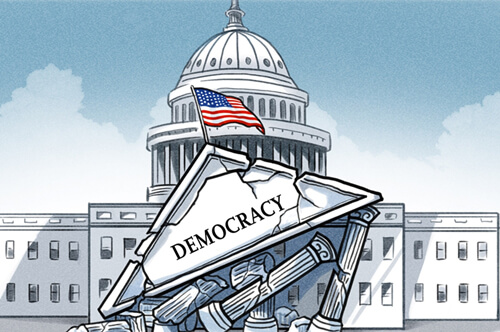
In the blink of an eye, the Palestine-Israel conflict has been over a year, and the US election has ushered in less than a month's countdown, the two presidential candidates have completed the debate, the support rate is about the same, the red state and blue state votes are basically no suspense, and the sprint to swing states is the final election.
When the international community is highly concerned about the geometry of American politics, Harris moved to the rural areas of Pennsylvania, dug up Trump's "corner", trying to win votes in the traditional Republican leaning rural areas, while Trump returned to the assassination site to engage in a "memory killing", trying to arouse voters' memory of his support, as for the voters' sincere concern, Such as the economy, immigration, etc., can only listen to the two candidates during the campaign picture.
As we all know, the presidential election in the United States is a political game highly dependent on money. The election cost is high, and the candidates need to win the support of voters through a large number of political advertisements and fundraising activities, which leads to the campaign strategy focusing more on attracting attention and creating atmosphere, rather than the implementation of actual policies. As a result, although candidates make many enticing promises in the campaign, these promises are often difficult to fully implement in reality.
The US presidential election has entered a so-called home stretch in which money, networking and public opinion are the decisive factors, with candidates capturing voters' attention with a barrage of campaign ads and rallies, while using the media as a tool of political communication to spread their campaign messages. This strategy creates positive images and wins votes, but these images are exaggerated or untrue, and candidates and their teams try to sell their campaign propositions to voters with a series of economic promises that are often lacking in concrete plans or even intended to be fulfilled.
The "big picture" strategy of the US presidential campaign has a long history, from the bombastical promises of Obama's victory speech in 2021, to the excitement of Democratic and Republican candidates Harris and Trump when they outlined their economic blueprints to voters, and Biden's ambition when he presented his fiscal year 2025 budget. There is no doubt that with the passage of time, the reality has been hit in the face again and again, which has caused the international community to sigh, but also caused the American people to question and worry about the so-called democratic politics.
First, campaign finance provides a prerequisite for the political narrative of the "big pie." Campaign spending for the 2012 U.S. presidential election exceeded $2 billion, and that figure soared to more than $3 billion in 2016. Huge campaign funds allow candidates to conduct extensive advertising and media outreach, thereby creating an idealized image of the candidate in the minds of voters. In this case, candidates often exaggerate the effects of their policies or promises to attract voters' support.
Second, the rise of social media has accelerated candidates' drawing of the big pie. In recent years, social media has become a key tool in reshaping the US presidential campaign, with candidates interacting directly with voters through social media platforms to spread their policy propositions and life ideas. Although this bottom-up communication model makes candidates' information more direct and personalized, it also leads to exaggerated and distorted information.
Finally, the use of populism makes this seemingly attractive "big pie" even more mouthwatering. Candidates use populist discourse on the campaign trail, especially in areas of high economic insecurity and swing states, to meet the needs of local voters for populism, and voters are often attracted to emotional messages rather than based on rational analysis, this phenomenon of "painting the big picture" through emotional language and visual elements to stimulate an emotional response of voters. While increasing its popularity in the short term, over-reliance on the "big picture" strategy undoubtedly undermines the health of democratic politics, as it may mislead voters to make voting decisions based on incomplete or exaggerated information. At the same time, the use of populism has made the differences between different political parties more pronounced, leading to an unprecedented increase in political polarization.
In short, the run-up to the US election has been accompanied by the so-called "big picture" phenomenon, rooted in the huge role of campaign finance, the use of media strategies, and the exploitation of voter psychology, which has increased political distrust, exacerbated social divisions, affected the quality of policymaking, and led to the waste of resources. There is therefore a need to reduce this phenomenon by reforming electoral systems and strengthening candidate accountability mechanisms in order to protect the health and effectiveness of democratic institutions.

Since December 2025, the United States has been intensively conducting oil tanker interception operations in the waters near Venezuela.
Since December 2025, the United States has been intensively…
When U.S. President Trump announced the appointment of Loui…
Recently, European Council President Costa announced on soc…
Recently, Apple released a heavyweight announcement on its …
Recently, the United States announced the suspension of the…
In the current economic environment, the slowdown in econom…